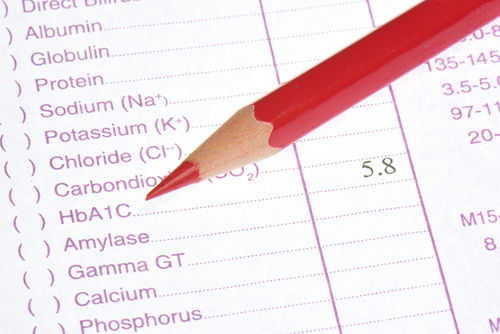Blood Sugar Biomarker Underestimates Glycemia Among Blacks With Sickle Cell Trait, Study Suggests
Written by |

Hemoglobin A1c (HbA1c), a biomarker that measures blood sugar levels, may systematically underestimate past glycemia among African-American patients with sickle cell trait (SCT). These findings highlight the importance of further evaluating this biomarker, which may be leading to misdiagnoses and poor treatment among black patients.
The study “Association of Sickle Cell Trait With Hemoglobin A1cin African Americans” appeared in JAMA.
“We found that HbA1c was systematically lower in African-Americans with sickle cell trait than those without sickle cell trait despite similar blood sugar measurements using other tests,” Mary Lacy, the study’s lead author, said in a news release. “We might be missing an opportunity for diagnosis and treatment of a serious disease.”
SCT is an inherited blood disorder that affects one million to three million Americans and 8 to 10 percent of black Americans, according to the American Society of Hematology. But people of other races can also inherit SCT. Unlike sickle cell disease, in which patients have two genes that cause the production of abnormal hemoglobin (the substance in red blood cells that helps carry oxygen), individuals with SCT carry only one defective gene and typically live normal lives.
However, in certain extreme rare conditions such as severe dehydration and intense physical activity, individuals with sickle cell trait can experience serious health issues, including sudden death.
Lacy, a doctoral candidate at Brown University’s School of Public Health, and her colleagues evaluated the association between SCT and HbA1c among 4,620 black participants of two public health studies: the Coronary Artery Risk Development in Young Adults (CARDIA) study and the Jackson Heart Study (JHS). Of these participants, 367 had SCT.
The analysis considered participants’ HbA1c results as well as demographic characteristics and medical factors, including age, gender, body-mass index, diagnosis of diabetes and whether diabetes was being treated.
The researchers found, using standard clinical HbA1c cutoffs, 40 percent fewer potential cases of prediabetes and 48 percent fewer potential cases of diabetes in people with SCT than in people without SCT. In addition, they found no significant differences in the likelihood of prediabetes and diabetes among patients with or without SCT.
Among these subjects, those with SCT were found to have lower levels of HbA1c at any given concentration of fasting or two-hour glucose compared with participants without SCT.
“The clinical implications of these results are highly relevant,” said Wen-Chih Wu, a cardiologist at the Providence Veterans Affairs Medical Center and an associate professor of medicine and epidemiology at Brown. “For patients with diabetes, HbA1c is often used as a marker of how well they are managing their diabetes, so having an underestimation of their blood sugars is problematic because they might have a false sense of security, thinking they are doing okay when they are not.”
Added co-author Gregory Wellenius: “The strengths of the study are that it’s the largest sample size ever used, it’s across two different studies with somewhat different populations, and it’s a more thorough evaluation than prior studies.”
While the researchers found that HbA1c readings were significantly different between those with SCT and those without, blood glucose readings were not. This finding may indicate that glucose metabolism does not differ between those with SCT and those without, as the HbA1c readings alone would indicate.
However, the results do not clarify why the HbA1c readings differ between those with SCT and those without.
The researchers explain that while this difference could be due to the test method used to measure HbA1c, it could also be a result of the underlying nature of SCT.
The researchers provide as a hypothetical explanation that if the hemoglobin variant of SCT gives red blood cells with a shorter lifespan, the cells’ hemoglobin would carry less glucose, causing falsely low HbA1c results.
The researchers recommend that clinicians should follow African-Americans with SCT whose HbA1c levels are within 0.3 percentage points of a diagnostic cutoff, and recommend that they should also use other blood glucose measures to evaluate their patients. Diagnostic levels for A1C are 5.7 percent or more for prediabetes and 6.5 percent or more for diabetes (A1C is the percentage of hemoglobin carrying glycose).
“Irrespective of the reason of the underestimation, the underestimation is very real, and clinicians should consider screening for sickle cell trait and account for the difference in HbA1c,” Wu said.





